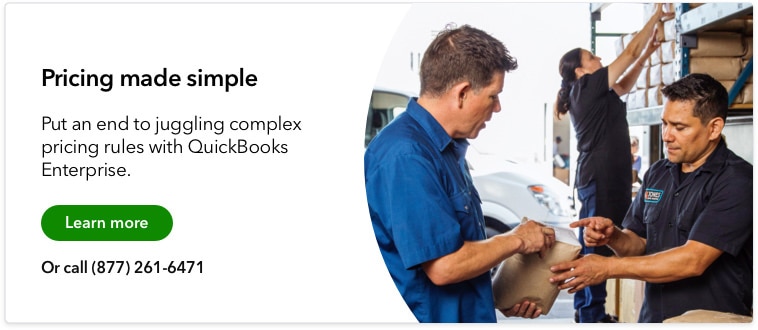Do you ever wonder why some products are more attractive, even if they aren’t always the lowest price? That’s psychological pricing at work.
Psychological pricing is used to prompt a purchase by triggering an emotional or impulse response in the customer.
In most cases, psychological pricing drives the desire to get a good deal or not lose out on an exclusive item. But there are many other ways businesses can use psychology to increase a company’s sales.
What is psychological pricing?
Psychological pricing is a strategy that uses slight changes in pricing to influence potential buyers and increase sales.
The technique is founded on the idea that customers don’t actually know how much something should cost and make their purchase based on which product has the best price. Psychological pricing aims to set the most attractive price point, satisfying people’s desire to find the best deal.
While the strategy is often seen with product-based businesses where customers in all markets are susceptible to psychological pricing.
For example, common pricing models include decreasing prices one cent below a round number (from $100 to $99.99) or setting a limited-time offer on select products. When any buyer comes across offers like these, a psychological impact entices them to purchase.
Benefits of using psychological pricing
An attractive price can be the key differentiator with so many products competing for our limited attention.
Psychological pricing indicates that a product is a good deal and offers significant value. The following are a few top benefits of utilizing psychology to set prices:
Ease of implementation
The psychological pricing method can be readily implemented by any business. The strategy doesn’t require product changes or time-consuming research, and there are already many proven tactics that can be immediately applied.
Plus, once deployed, the results of using psychological pricing will be seen in the company’s sales data. QuickBooks Enterprise can simplify pricing strategy implementation with flexible pricing rules and instant automations that keep revenue projects on target.
Faster customer purchase decisions
The main goal of psychological pricing is to draw in customers. This allows a company to direct attention to specific products and simplifies the customer’s decision-making process.
customers typically take some time to research a product and weigh their options. But products only offered during a limited window or at a price that’s perceived as a good deal can make it an immediate choice.
If a potential customer is interested in an item, psychological pricing can be all that’s needed to sway them to purchase.
Betters sales with bigger margins
While other strategies take several factors into account, such as production costs or competitor’s pricing, psychological pricing is focused solely on sales conversions.
It can be applied across a category or select products a company hopes to quickly sell, such as dead stock or overruns.
When deployed during a peak season or coupled with a promotional campaign, psychological pricing discounts can be an effective push to increase sales. Since the strategy doesn’t cost much to implement, the same level of profits can be maintained throughout the promotion.
Challenges of using psychological pricing
Psychological pricing is a useful way to drum up interest in a product. However, it’s best to be aware of the challenges that come along with applying this method:
Diminishes perceived value
Psychological pricing tactics usually come in the form of a discount, which can lower the perceived value of the product. Price is one of the clearest ways to communicate quality and value in the market, and setting too low a price, even for a limited time, can diminish the product’s worth in the eyes of some customers.
Potentially harms brand reputation
If a company applies psychological pricing strategies too often, the market will expect lower prices. Some customers may also not appreciate “being marketed to” and consider too many pricing tactics a turnoff.
In time, customers may no longer purchase products unless they get a discount, and their loyalty will be to the price instead of the product. This unintended effect can negatively impact the company’s position in the market.
Not a permanent pricing strategy
Yes, psychological pricing tactics are likely to jumpstart sales in the beginning. But continuously offering discounted prices may desensitize customers in the long run.
Psychological pricing works best when done for a specific marketing strategy or short campaign. A company should have a sustainable approach, such as cost-plus pricing or value-based pricing.
Five examples of psychological pricing strategies
There are several ways a company can use psychological pricing for its products. Depending on the industry, business type, and product, the following are the most popular kinds of psychological pricing used today:
Charm pricing
This is the most popular form of psychological pricing, thanks to its simplicity and effectiveness.
Studies have shown that our brains exhibit the “left brain bias,” wherein a customer’s perception and purchase decisions are disproportionately influenced by the left-most digit of the product price. For example, something priced at $29.99 is considered $29 rather than $30, which is only one cent away.
Another form of charm pricing is odd-even pricing, which holds that customers are more attracted to prices ending in an odd number than an even number. In this strategy, a product priced at $50.97 is more attractive than the same product at $50.40.
Price anchoring
When scanning through similar products, customers tend to place more weight on the initial price they see and use it to inform their purchases. Companies can use this cognitive bias to set their anchor price. For example, they can include a higher price, such as the competitor’s or the full price tag, next to the discounted sale price to highlight the product's true worth.
An alternative form of price anchoring is decoy pricing, where companies add another product option that’s less attractive than the original one as a way to lead the sale.
Focus on what’s free
When marketing to customers looking for good deals, what would be more attractive than something free? If the discount being promoted is large enough, it can be more effective to reverse the message and focus on what the customer will get rather than what they can save.
For instance, instead of offering 50% off a product’s price, a better pricing tactic could be to offer a “Buy one get one” deal instead. While the two promotions are essentially the same, offering something free is more attractive. Plus, using innumeracy and removing numbers from the price sends a more direct message.
Artificial time constraints
customers sometimes take their time in making a purchase—unless they feel they’ll miss out on a great deal of value. Artificial time constraints, like seasonal promotions or single-day events, create a sense of urgency and tug on customers’ fear of missing out.
Ecommerce retailers can also benefit from adding a digital countdown timer to heighten the feeling of urgency.
Attractive price appearance
Once the psychological price is determined, other tactics can be used to make it even more appealing to customers. For example, if a company has a preferred product that brings the most profit, it should be placed between other options. People naturally gravitate to the middle option when given a choice.
Another effective way to display prices is by removing the decimal and cents altogether, resulting in a shorter number. For example, a $29 product appears to cost less than one listed as $29.00.
Final thoughts
Psychological pricing is a common and very effective way to price products, thanks to its
focus on the customer’s psychology.
While effective at quickly increasing sales, psychological pricing is best coupled with a foundational pricing strategy. A company first needs to understand the ideal pricing for its products and then apply psychological pricing tactics for the best results.
QuickBooks Enterprise can help streamline different pricing strategies with customizable and automated pricing rules. These features allow a company to easily change campaigns and shift to the strategy that generates more revenue for your growing business.












